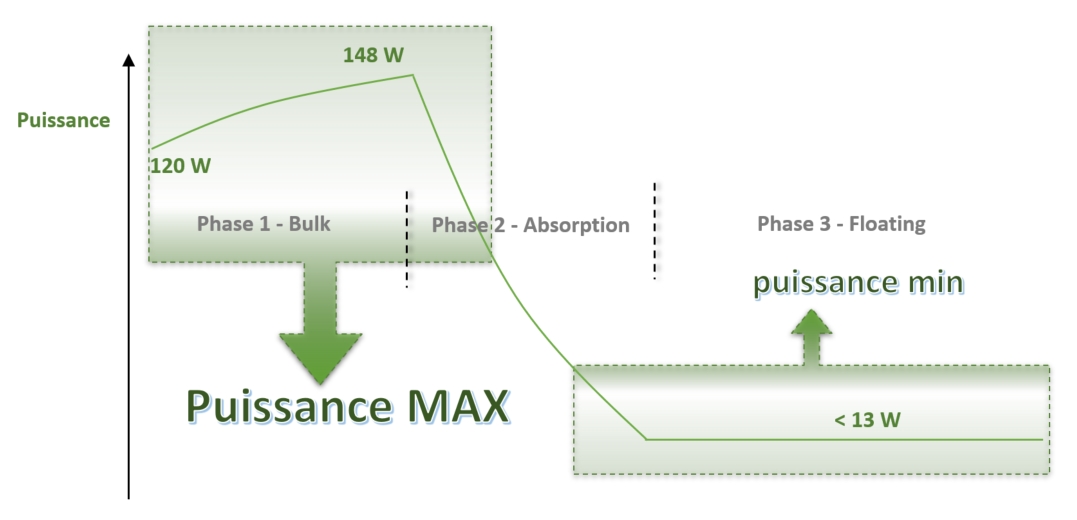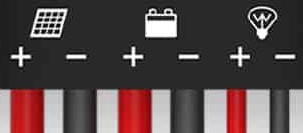Choosing a good solar regulator is absolutely crucial for the electrical installation of your motorhome. The quality of the solar controller impacts the autonomy of your motorhome as well as the lifespan of your batteries. We will see in this article what are the key points to take into account to make the right choice.
MPPT versus PWM? An important criterion but not sufficient.
It is often said (rightly) that MPPT regulators are superior to PWM. This is generally true if we look at a single criterion: that of the peak power that the regulator is capable of providing at output. On the other hand, if we look at the total amount of current produced in a day, we see that a good PWM regulator can produce more current than a low-end MPPT regulator. For what ?
Because a low-end MPPT solar controller has two disadvantages. The first is that it heats up, and when it reaches its ceiling temperature (often 40 degrees), it reduces its output power, sometimes even stopping producing current. It then becomes much less efficient than a PWM regulator which heats less and which continues to produce maximum intensity despite the heat. In summer, it is best to be equipped with a solar controller that is heat resistant and capable of producing continuous power all day long.

The second disadvantage is that a low-end MPPT regulator operates on "load cycles", i.e. the regulator measures the battery voltage, and when this voltage drops below a threshold (generally below 12 .5V), the regulator triggers a charging cycle (in three phases boost, absorption, floating). This succession of cycles gradually deteriorates the batteries and reduces their lifespan. A good PWM regulator will be able to spread the current consumption of electrical appliances (fridge for example) during the day while always providing sufficient intensity so that the battery does not discharge, thus increasing the lifespan of the cell battery bank. .
The presence of a consumer outlet: a determining selection criterion
On a solar controller for motorhomes, the “consumer” output, also called “load” output, allows the regulator to directly power the vehicle's various electrical devices. If the solar panels are powerful enough, the controller can transmit all the energy produced by the panels to consumers, while also charging the battery if necessary. The major advantage is therefore to save the battery by asking it to provide a minimum current, and by reducing the number of charge/discharge cycles. Battery life is significantly increased. A regulator of this type therefore has six connections: two wires (+ and -) for the battery, two wires for the solar panels, and two wires for the consumers, which are generally connected to the vehicle's electrical panel.

In conclusion, rather than buying a low-end MPPT regulator for thirty euros, choose a quality solar regulator, capable of maintaining high intensity in very hot conditions (which is the case with camper van bunkers). ), and which has a consumer output to power your electrical devices and save your batteries charge/discharge cycles.
To protect your installation, consider equipping your vehicle with the anti-theft cable for motorhomes and thus avoid intrusions by strangers into your camper.
Conclusion
In this video, John first presents the fundamental elements of a solar installation, and in particular recalls the points to be taken into account when sizing the solar panels and the battery bank. Then we see precisely what are the factors that limit the performance of MPPT regulators, and what are the characteristics that must be taken into account to buy an effective product.
